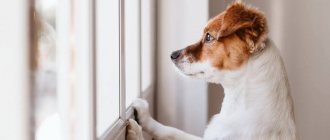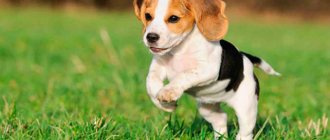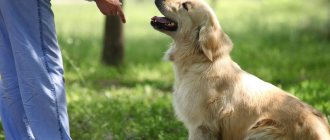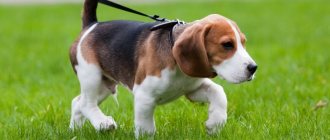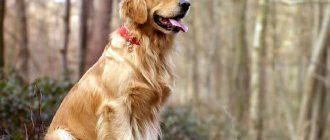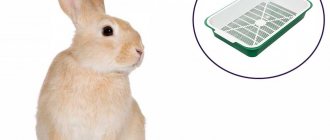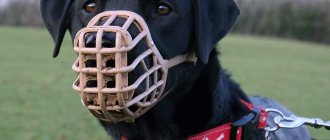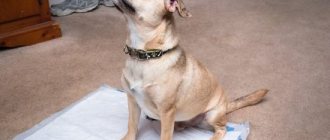When you have a four-legged friend in your home, you need to train him to walk. This is a very important and at the same time difficult mission that almost anyone can cope with. How to teach a dog to go to the toilet not in the apartment, but only on the street? Enter the concept of “mode”. At the same time, feed the animal and take it for walks, this will help accustom it to order. The pet will know that at a certain time he will definitely be taken out for a walk and will learn to endure. In addition, any training or development of a useful habit is accompanied by encouragement. The dog should be rewarded for every “effective” walk.
The controversial issue is to punish your pet for toileting at home? It is strictly prohibited; not all animals understand why they were punished when trying to train them. Apart from fear, this does not lead to anything good. Here you need to be patient, don’t raise your voice, follow the schedule and everything will work out.
No time to train your dog to walk?
A dog walker from the Guldog service will help you accustom your pet to regular walks.
Order service
When can you take your puppy out for a walk?
It is possible to accustom a dog to the street no earlier than the second vaccination has been given. Otherwise, the baby can easily catch distemper, enteritis, or another dangerous disease in the yard that can lead to the death or disability of the animal.
What to do while the puppy is not allowed to go for walks
While the dog does not leave the apartment, you need to think about how to wean the puppy from peeing anywhere at home. To do this, get him used to a dog diaper. The skill of emptying in a certain place will instill discipline and subsequently make it easier to train the dog to use the toilet outside.
You need to train your dog based on the following rules:
- The puppy never defecates where he sleeps unless there is no other option. When he wakes up, he always moves away from the bed to relieve himself there.
- The dog always defecates immediately after eating or playing actively. Therefore, as soon as he wakes up or calms down after playing, take the baby to the diaper.
- Always praise your baby when he goes to the toilet for a diaper.
- Your pet should always have access to a diaper.
- If your baby urinates in the wrong place, carefully clean the floor using special products. Never poke your dog's nose into urine. This way you injure the baby, which can lead to fear incontinence.
It is necessary to accustom your pet to a diaper no later than 8 weeks. By three months, the dog should be able to find the toilet on its own at home.
Accustoming a puppy to the street
Why do dogs go to the toilet outside? Because they were taught. If this is not done, they will crap at home, which will not lead to anything good.
When the quarantine after vaccination is over, the dog can be taken out into the yard. Before you train your dog to go to the toilet, buy a leash, collar or harness, and muzzle in advance, taking into account the size of the pet, based on the following recommendations:
- The collar must fit snugly on the dog. It should not be squeezing the neck or dangling. If the dog jumps out of the collar, he may run away and, if things go wrong, get hit by a car.
- Buy a leash of at least 2 meters. If it is made in the form of a chain, the links must be strong. When the pet grows up and the chain is too thin, he will break it. If the chain is too thick, it will be difficult for the baby to support its weight, which will have a bad effect on the formation of the skeleton.
- When buying a roulette leash, check its quality. If the button that fixes the length of the leash breaks near the road, the puppy may accidentally throw itself under the car.
- A harness for a puppy is more reliable than a collar. Her choice must be approached carefully. Make sure that the harness is sewn correctly, otherwise it can injure the pet and disrupt the formation of the skeleton.
Where and how to walk
When your pet is on a leash, you can walk with it wherever dogs are allowed - on the street, in a park, in a square. Never let him off leash near the road, even if there are no cars. The dog may suddenly run, or a car may unexpectedly drive out and run over the dog.
You must let your pet off the leash in special areas designed for walking dogs. If they are not there, in an area closed to cars. You can walk in the park with a small puppy without a leash. At the same time, you must carefully ensure that there are no large, aggressive dogs nearby.
Before a walk, your puppy commands: “Come to me!” must perform perfectly. This could save his life.
How many times should you take your dog outside?
The number of walks depends on the age of the pet:
- Until six months, the dog needs to be walked 4-5 times a day, for at least half an hour. When your baby is sitting at home, do not play active games with him, let him behave calmly.
- At 6 months, the number of walks can be reduced to three times.
- When the pet is 1-1.5 years old, it can be bred twice. It is advisable that the walks be active and last at least an hour.
The Importance of a Day Walk
To teach a dog to go to the toilet outside, you need to walk it during the day, otherwise the learning process will be delayed. If you are at work and none of your family members can do this, never let your dog go for a walk. This is fraught with disaster.
It’s better to ask your friends who have free time to walk the dog during the day for an additional reward. This can often be done by teenagers, but not under 14 years of age, even if you have a Miniature Pinscher. When a dog fight happens, small children will not be able to defend the pet.
If you do not find anyone when leaving the apartment, provide your pet with access to the diaper. This way, it will take longer for your puppy to get used to going outside and going to the toilet, but the floors will remain clean.
Quality of walks
Walks should be full, so that the pet can walk, run out, and have a normal bowel movement. He should be tired enough to come home and go to bed. As soon as the baby wakes up, he should be taken out into the yard immediately. If you suspect that he wants to go home, you need to give a prohibiting command.
Video
So, if you have a pet and you were able to teach him to wait until he goes for a walk and only perform his natural needs there, that’s great. But we must not forget that your pet needs constant attention from you. It happens that in order to attract the attention of the owner, the dog begins to pee at home. She does not do this to spite you, but simply gives a signal: something is going wrong, or it is an illness.
How did you train your dog? How quickly did you do it? What methods did you choose? What incentive methods did you use? How many times do you take your pet outside? Tell us in the comments, share your experience, so that it will be easier for those who are just starting this struggle.
How to stop your dog from peeing at home
If the dog defecates in the apartment, there is no need to hit or poke his nose. The baby may develop psychosis and describe it due to fear of punishment. Instead, it’s better to lament over every puddle. He already understands what he must do, and in order not to upset the owner again, the baby will endure.
Ban command
When your pet decides to defecate in front of your eyes, do not yell at the baby. Say clearly: “Ugh, you can’t!” Put a collar and leash on your dog and take him outside. When he does his job, don't forget to praise him.
Feeding plan
To ensure your puppy's outdoor toilet training is successful, make a feeding plan based on age. Remember that a small puppy will always eliminate after eating, so you need to take your dog out as soon as he eats. An older dog can wait a few hours, but if you feed the baby after an evening walk, chances are high that he won’t wait until the morning.
Walking after eating should not be active. In the evening, after the last time you come in from outside, don’t let your pet eat, otherwise he’ll go to the toilet until the morning. He must get used to the regime, so do not feed the baby outside of the schedule. If he hasn't finished eating, remove the bowl.
Reward
Always praise him when he relieves himself on the grass, give him a treat after each bowel movement. If he continues to go to the toilet at home, there is no need to praise the dog, even if he does his business in a diaper.
Don't be lazy
How to stop a puppy from peeing at home? If you fed the puppy at night, don’t be lazy, go for a walk with him. The same must be done if the baby begins to ask - he behaves restlessly, comes to the door, refuses to go to the bed, or follow commands. So he asks to go to the toilet. If you ignore the signals, decide to let him go to the diaper, you will take a huge step backward in training.
Cell
To prevent your pet from defecating at home when you are away or sleeping, buy a crate. It doesn’t need to be too spacious - he should be able to stand up, sit down, and stretch out. But if there is extra space, he can allocate space for a toilet.
Place a bed in the cage and buy toys for your pet. Important! A cage is no substitute for quality training. Don't abuse it. Do not put your dog in a crate for a long time if you are at home. He needs attention and care.
If at night your pet begins to behave restlessly in its cage and howl, it means it is asking to go outside. Even if it’s deep night in the yard, get up and take the baby out. There is no need to put the baby in a diaper. He must understand that things should only be done on the street.
Cleaning
Carefully clean all areas “marked” by the dog. To completely remove the smell, buy a special product at pet stores. It is better not to use toilet duck, bleach and similar preparations. You may be poisoned by the fumes if you take too much of the drug. In addition, bleach can ruin the floor.
Remove soft covering
Until the puppy is toilet trained, remove all carpets, paths, and soft coverings from the floor. This type of floor is associated with grass, and he enjoys defecating on it. If there is carpet at home, the pet should not walk on it until it has had a good walk outside.
Taking care of your pet's health: the hidden dangers of walking
Walking is not only a lot of fun and positivity for the puppy, but also the risk of becoming infected with worms or external parasites. Therefore, preventive deworming should become the norm for your pet. A good solution for dogs with a short muzzle, as well as for capricious and biting pets who cannot easily give medicine by mouth, is the “Spot-on” form - drops on the withers. These drugs include Dironet® Spot-On for puppies. This is a medicine for external use in the form of drops. For treatment, it is used once, applied to the dry skin of the pet. For prevention, Dironet® Spot-On is used once a quarter or once every six months, depending on the dog’s lifestyle. This drug is suitable for puppies from 2 months of age.
Sources:
https://www.royal-canin.ru/puppy/razvitie-i-vospitanie/kak-priuchit-shchenka-k-vygulu/ https://faunazoo.ru/priuchenie-shhenka-k-vygulu https://www .vetmag.ru/advice/sobaki-soderzhanie-i-uhod/kak-priuchit-shchenka-k-vygulu-na-ulice-poleznye-sovety/
How to train an adult dog
If you adopted a dog from a shelter that has never lived in an apartment, you need to toilet train it like a puppy, bypassing the diaper stage. Otherwise, she will crap in the house, going into a room where there is no bed for her.
It is easier to train an adult dog than a puppy, but it will take a week or two. Therefore, be prepared for puddles in the apartment; for cleaning them, buy a special product in advance.
Therefore, be patient, preferably take a vacation. You will have to work from the first days of her stay in the new home, often with a dog whose trust you have not yet won. Therefore, under no circumstances should she be frightened, beaten or punished.
The action plan is as follows:
- Create a clear walking schedule. If you don't follow the schedule, it will be difficult for your dog to learn to be patient because he won't know when he will be taken outside. At first, it is better to walk your pet 3 times a day. If an adult dog has had a walk in the morning, he will not want to go to the toilet until lunch.
- Roll up all carpets, rugs, soft bedding: dogs love to defecate on a soft surface.
- When the dog has emptied at home, scold him with your voice, pointing to the puddle. Do not hit him if the animal gets scared and refuses to interact with you.
- Praise your dog every time he does his business outside.
- Walk with the dog until he completely finishes his “business”. Not only does he have to pee, but he also has to poop.
As soon as you pick up the dog, do not immediately bring it into the house, walk nearby so that it goes to the toilet and marks places. The animal will remember them and will strive for them every time you go for a walk.
Useful tips
- Training can be delayed if you don’t walk your puppy enough, have a poor schedule for feeding and walking, or don’t always respond to the moment when he needs to go outside. Reconsider your actions.
- If your pet goes to the toilet in a cage, it means it is too spacious and the dog has divided it into a “bedroom” and a “toilet”. If the size of the cage has nothing to do with it, then the breeder kept the baby in the cage for a long time, and he learned to walk “under himself.” In this case, a crate will not help the puppy learn to tolerate going outside, but other methods will be effective.
- If you can’t catch the moment when your pet wants to go outside, keep the baby near you so that you can notice the baby’s anxiety in time. Limit your dog's movement around the apartment.
- Until the puppy pees or poops, don’t go home, even if you think you’ve been walking too long. If a dog does not go to the toilet outside, it means there are a lot of irritants around. Go to a quiet place where there will be no distractions to prevent your puppy from going to the toilet outside. After voiding, be sure to reward and praise.
Nuances of training
We have discussed the main points on how to teach a dog of any age to manage its natural needs. But any process can be ruined and no result achieved if you do not follow some rules:
- give time to an animal of any age, be especially patient;
- during the walk, try to go to quieter places so that the dog can feel calm;
- set a routine, trying to walk your pet at approximately equal intervals;
- You cannot use physical punishment on the puppy, poke your nose into puddles, or scream loudly;
- you will only achieve that the baby will be afraid of you;
- Punishment can be applied to an adult dog. For example, lightly slap the withers;
- If you decide to punish, do not do it with your hand. You stroke your pet with your hand and give him a treat. This means that it should be associated only with good things. You can take a newspaper, a leash;
- do not intentionally cause pain to the animal, especially for training purposes;
- If after time the problem with the toilet remains, take the dog to the veterinarian. Perhaps she has problems with her kidneys or genitourinary system;
- come up with a daily approximate route so that the dog has “his” places. It so happens that after going your usual way, you will take a walk and the animal will relieve itself.
